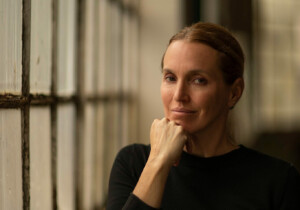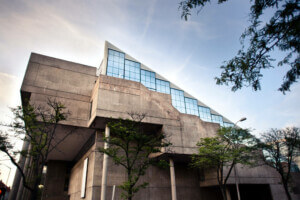What happens when a classroom of fifth graders is offered the agency to ideate the design of their school? Architectural designer Enrico Giori proffered this while studying architecture at Rhode Island School of Design (RISD). His research culminated in a self-published book, We Want a School!, which serves as a model curriculum for involving children in the production of space and recalls the importance of engaging a project’s stakeholders.
During the pandemic, Giori connected with an elementary school in Milan for his research. Through virtual sessions, he, the teachers, and a classroom of students conceptualized their aspirations for a better school. Before the project began, Giori told advisors at RISD his idea, and they were skeptical. “Oh, you’re just gonna get ‘I want candy’ or ‘I want a slide’ and, ‘there will be no actionable items’,” Giori recalled in an interview with AN. This isn’t what happened, however. Giori notes that students thought big and creatively with gusto and innovation, positing ideas for a school “that screams at injustice,” “doesn’t exclude anyone,” and “spills out on the street.”

Giori’s research capped off in a beautifully illustrated children’s book, We Want a School!. The book is based on a manifesto penned by the children early on in the project. It couples rhyming lines comprised of quotes from students with illustrations by Giori. Giori calls it a manifesto that both references the traditional idea of a manifesto as a piece of writing as well as the Italian verb “manifestare” which translates to protest, or to advocate.
“What was really behind this process was showing that you can let children take charge in the design process, and follow their ideas and still produce an architectural and design proposal that is responsive to what they need, but that also still makes sense for the types of spaces that you’re working on,” Giori said.

The book’s pages present text in English and Italian. This exercise in learning about the design process introduced students to brainstorming, heeding feedback, and how ideas come to fruition. Revealed in this were aspects of storytelling as well as education and learning practices such as diffused learning.

One assignment students responded to came after they were asked to list places with educational value beyond the classroom. The roster was myriad: the Wednesday Market in Piazzale Ferdinando Martini, the paint store on the corner, and the streets, they suggested. Through diffused learning, students saw how a trip to the grocer or a visit to the local paint store relates to the lessons learned in the classroom. These external locations were translated in the book through prose and drawings. The paint store is depicted with a waterfall across its facade and puddles out front and the market with a series of stalls and trucks.
Scenes in the book are each drawn from a different perspective, among these close-ups from the view of a child, from underground with the roadway stripped away, and isometrically. Giori remarked that in a lesson on privileged views students lamented they didn’t understand how to read a plan, yet they completely grasped a view when taken from a worms-eye perspective or presented at their eye-level.

“Making this profession accessible, not only to the general public, but especially to young children, makes them realize that agency and design really go hand in hand, they go together, and they can have a very profound impact on their communities,” Giori said.
As a designer at Pasadena, California–based firm Architecture for Education, Giori often works on public schools. Giori sees parallels between the students’ “wants” and the considerations he makes when designing education facilities. Among these concepts are flexibility, reconfigurability, and indoor-outdoor learning. As evidenced in the book, learning doesn’t have to be constrained to a classroom. This becomes a reality within the pages of We Want a School!, illustrated by desks arranged outdoors and in the imaginative nighttime theater sited outside the school building.
It’s a happy ending for the students who collaborated with Giori on the project. Grant funding will allow their school to realize an outdoor learning environment, complete with a makerspace and tiny huts (just like those depicted in the book). The bigger takeaway, however, is the visioning approach: a lesson in how an idea or a provocation can happen when one listens to those involved.

“I’ve always struggled in architecture school with the expression, ‘what is your big move?’ For this project, the big move was listening and engaging stakeholders . It doesn’t have to be a big swoop in the roof, or an expensive facade cladding material, your big move can be the people who are in this building,” Giori said.











